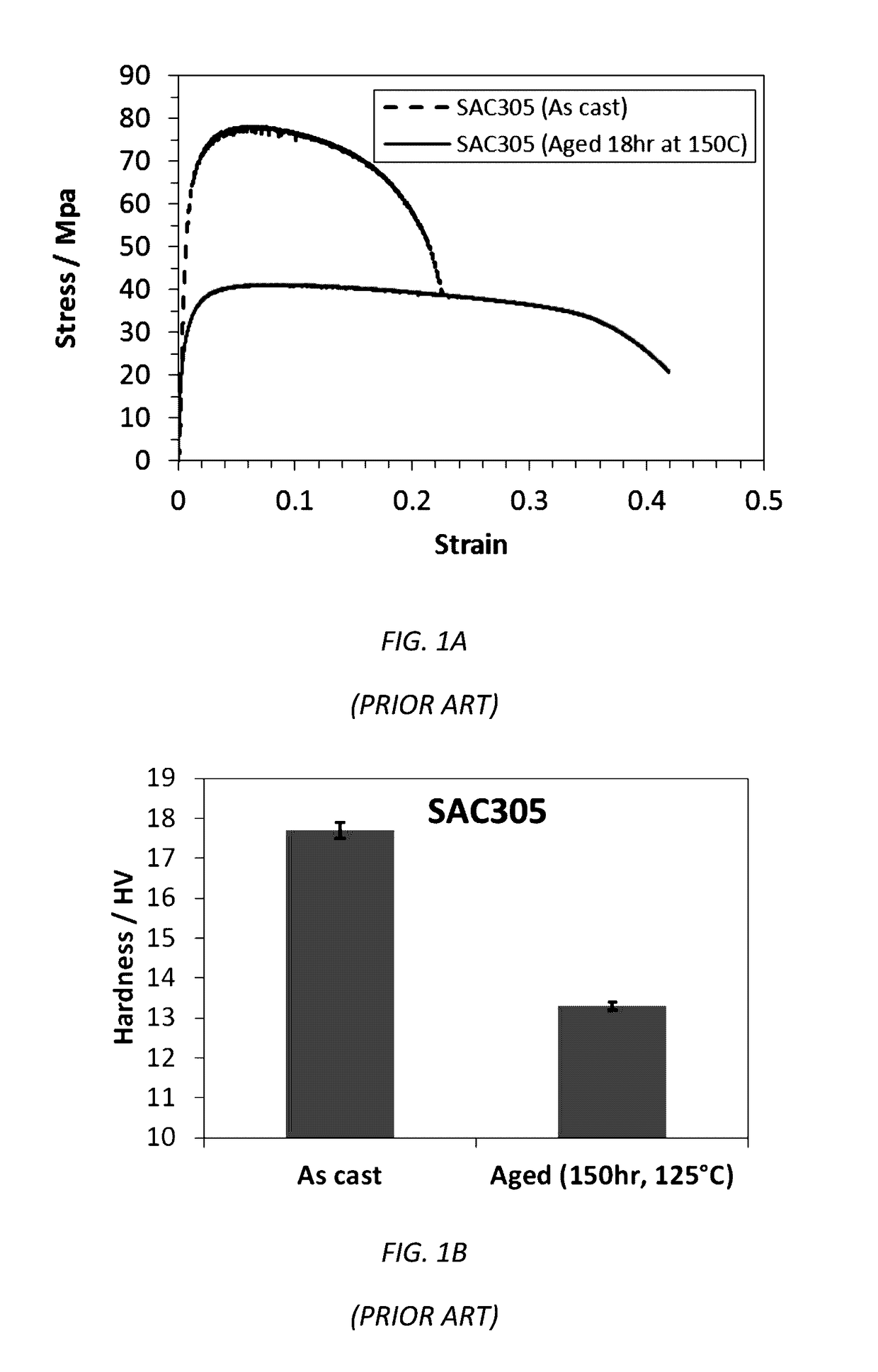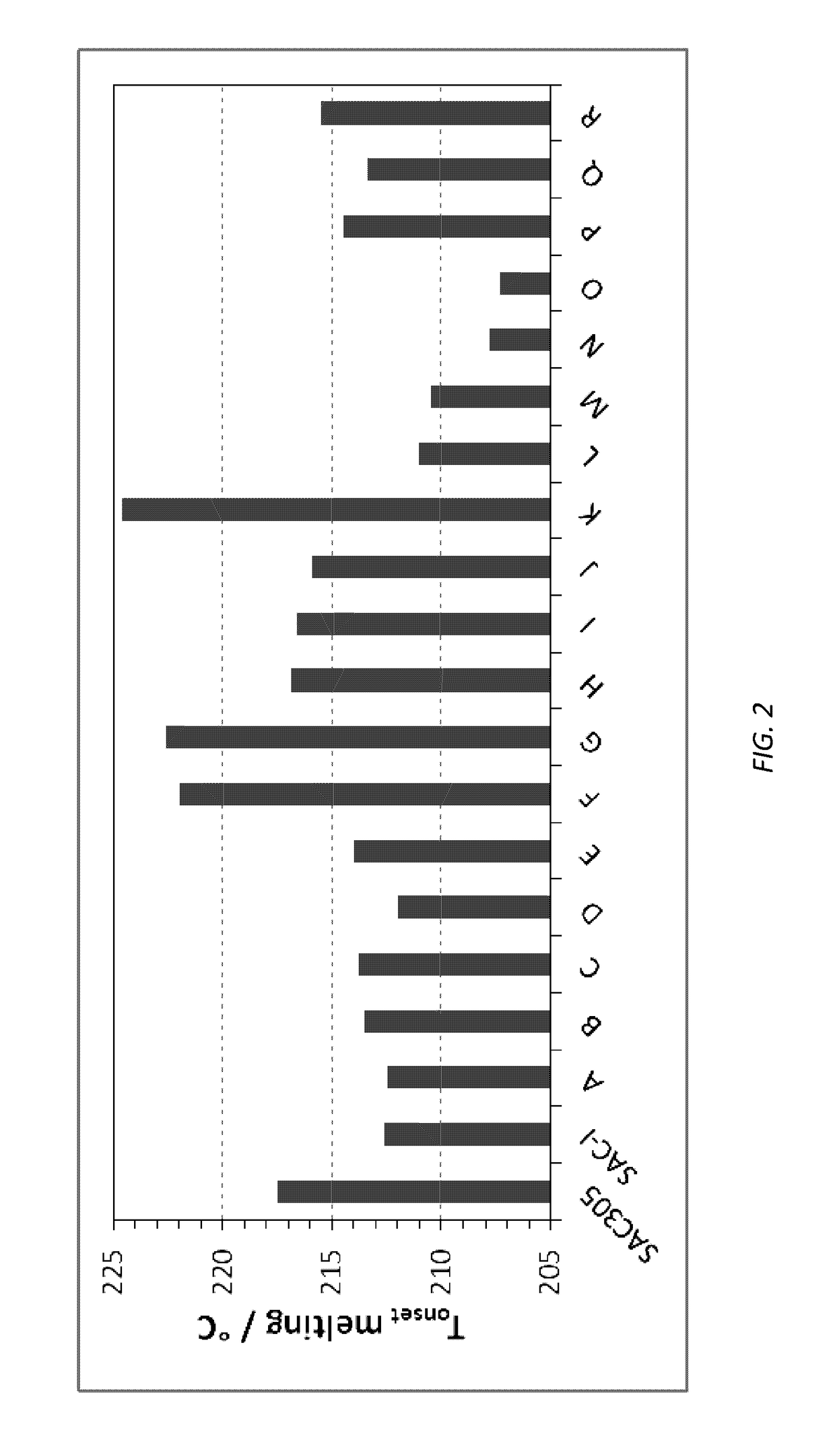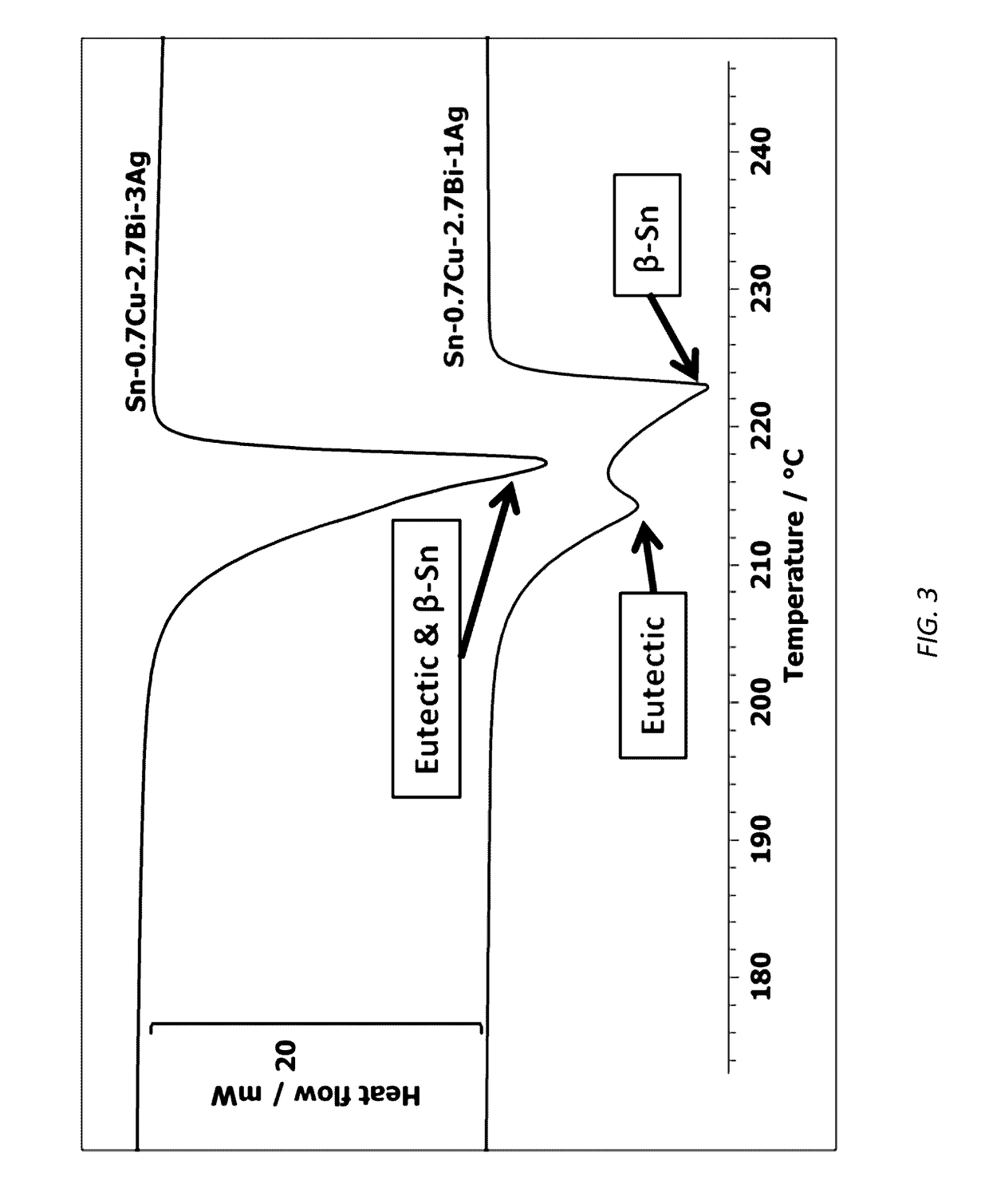Lead-free high reliability solder alloys
a solder alloy, high reliability technology, applied in the field of solder alloys, can solve the problems of poor creep resistance of traditional lead-free sn—ag—cu (sac) alloys in harsh service environments, and reduced reliability of solder joints, etc., to achieve better mechanical properties, reduce melting temperature, and improve the effect of mechanical properties
- Summary
- Abstract
- Description
- Claims
- Application Information
AI Technical Summary
Benefits of technology
Problems solved by technology
Method used
Image
Examples
Embodiment Construction
[0038]As described above The object of the invention consists of identifying a lead-free solder alloy based on the Sn—Cu (reference to Sn-0.7Cu) and Sn—Ag—Cu (reference to SAC305) systems which exhibits a comparatively lower melting temperature, better mechanical properties and high temperature creep resistance with reasonable wetting and spreading performance.
[0039]To achieve this object the following alloy compositions (Table 1) has been studied and fine-tuned:
TABLE 1Range of alloys composition studied.ElementsCuAgBiSbNiTi, Ga, Zn, InSnWt %0-3.50-3.80-5.60-7.50-0.20-0.15Bal.
[0040]Ni may increase strength through precipitation strengthening mechanism by forming intermetallic phases with Sn. Adding Ni increases the thermal stability of an alloy due to its high melting temperature. It has also been reported to improve thermal fatigue strength. Whereas Ni-free intermetallic experiences a phase transformation around 186° C., addition of Ni stabilizes the intermetallic phase (Cu,Ni)6Sn5...
PUM
| Property | Measurement | Unit |
|---|---|---|
| Fraction | aaaaa | aaaaa |
| Fraction | aaaaa | aaaaa |
| Fraction | aaaaa | aaaaa |
Abstract
Description
Claims
Application Information
 Login to View More
Login to View More - R&D
- Intellectual Property
- Life Sciences
- Materials
- Tech Scout
- Unparalleled Data Quality
- Higher Quality Content
- 60% Fewer Hallucinations
Browse by: Latest US Patents, China's latest patents, Technical Efficacy Thesaurus, Application Domain, Technology Topic, Popular Technical Reports.
© 2025 PatSnap. All rights reserved.Legal|Privacy policy|Modern Slavery Act Transparency Statement|Sitemap|About US| Contact US: help@patsnap.com



